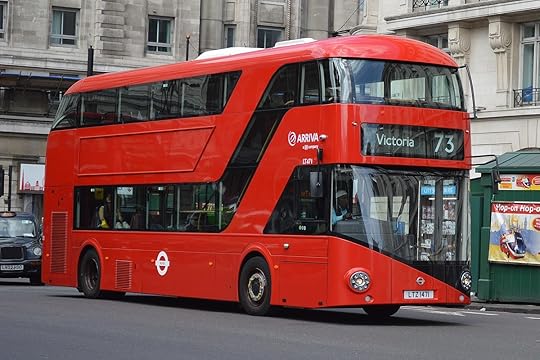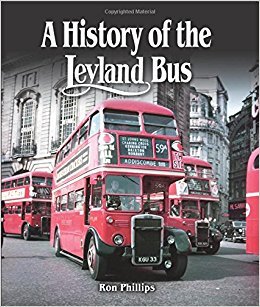The History Book Club discussion
TRAVEL AND TRANSPORTATION
>
BUSES
date newest »
newest »
 newest »
newest »
message 1:
by
Bentley, Group Founder, Leader, Chief
(last edited Jan 28, 2019 11:04PM)
(new)
Apr 29, 2013 07:47PM
 Mod
Mod

reply
|
flag
 Is there any other bus company?....the ubiquitous Greyhound.
Is there any other bus company?....the ubiquitous Greyhound.Hounds of the Road: History of the Greyhound Bus Company
 by Carlton Jackson (no photo)
by Carlton Jackson (no photo)Synopsis:
The bus system that came to be known as the Greyhound Bus Company was founded by Carl Eric Wickman, an enterprising Swede of Hibbing, Minnesota. The first bus was a seven-passenger Hupmobile touring car that was used to transport miners across the Mesaba Iron Range to and from work. Wickman was soon joined by another Swede, Andrew Anderson, and they began operating in earnest the route from a saloon in Hibbing to the fire-hall in Alice. From this lowly beginning grew the Greyhound Corporation, a multi-million dollar company which, through the years, has owned everything from a chain of hamburger restaurants to a soap company.
 One woman's experiences as she traveled across the country for years by Greyhound....the people she met in "bus land".
One woman's experiences as she traveled across the country for years by Greyhound....the people she met in "bus land".The Great American Bus Ride
 by Irma Kurtz(no photo)
by Irma Kurtz(no photo)Synopsis:
”The truth is, I am a hussy of low appetites who yearns shamelessly for rough travel…Greyhound and I were made for each other.”
After more than thirty years as an expatriate, Irma Kurtz gave in to her growing curiosity about her American roots and set off on a grand adventure to explore ‘the most baffling of all places’ – by Greyhound bus. Taking only the barest necessities for travel, she entered the vast network of America’s bus routes and a seething, fleeting world of brief encounters and changing landscapes.
During the great loops of her journey back and forth across the continent, Kurtz was as fascinated by the people thrown up at random on each bus as by the places flashing by outside the window. She creates a vivid and highly entertaining portrait of America reflected in the hundreds of characters she observes fromthe close quarters of the bus. Feeling herself becoming ‘invisible’ as she passes into middle age, she senses a wonderful new freedom to watch and record other people.
This is America caught unawares, in the no-man’s-land between bus stations: a more truthful picture of it than we have come to expect, from a woman looking coolly at the truth about herself.
History of the Leyland Bus
 by Ron Phillips (no photo)
by Ron Phillips (no photo)
Synopsis:
Including some previously unseen illustrations, the book covers: a full company history - from beginnings as the Lancfashire Steam Company in 1886, to the acquisition by Volvo Buses in 1988.
Technical details of all the main models - including the Lion, Titan and Olympic ranges. Gearless buses and rear-engined double-deckers are covered as well as charabancs, trolleybuses, First World War military vehicles and overseas models. The deregulation of the bus industry in Britain and the end of the Leyland bus are discussed too.
And here it is:

 by Ron Phillips (no photo)
by Ron Phillips (no photo)Synopsis:
Including some previously unseen illustrations, the book covers: a full company history - from beginnings as the Lancfashire Steam Company in 1886, to the acquisition by Volvo Buses in 1988.
Technical details of all the main models - including the Lion, Titan and Olympic ranges. Gearless buses and rear-engined double-deckers are covered as well as charabancs, trolleybuses, First World War military vehicles and overseas models. The deregulation of the bus industry in Britain and the end of the Leyland bus are discussed too.
And here it is:

London Leylands
 by Jim Blake (no photo)
by Jim Blake (no photo)
Synopsis:
LONDON'S FAMOUS RT-TYPE BUSES were an iconic symbol of our Capital city in the 1950s, before being superseded by the Routemasters.
Most were built between 1947 and 1954 to replace worn-out pre-war and wartime buses, as well as our remaining trams. More than 7,000 were built in all and although London Transport favored A.E.C. chassis, which the first batches of RTs had, so pressing was the need for new buses that not enough could be supplied by that manufacturer to match demand.
Therefore Leyland Motors were contracted to adapt their Leyland "Titan" PD2 chassis to fit bodies that, for the most part, were identical with those on RTs. The result was the 1,631-strong RTL class, together with the 500 RTWs, which had bodies also built by Leyland to the same general design, were built between 1948 and 1954.
Always in a minority compared to the 4,825-strong RT class, these Leyland buses had a character all of their own, perhaps personified by their louder engine note. They also had a reputation for being heavier on their steering than the RTs, making them unpopular with staff, and therefore general withdrawal of them commenced in 1958, taking almost ten years to complete (in November 1968), whereas the RTs soldiered on until April 1979.
During the RTL and RTW class buses' final years, Jim Blake was out and about photographing them throughout London. A selection of his photographs of them, most previously unpublished, is presented here. Nearly fifty years after their demise from London's streets, the RTLs and RTWs still have a firm following amongst bus enthusiasts and preservationists alike, and it is to them that this book is dedicated!
 by Jim Blake (no photo)
by Jim Blake (no photo)Synopsis:
LONDON'S FAMOUS RT-TYPE BUSES were an iconic symbol of our Capital city in the 1950s, before being superseded by the Routemasters.
Most were built between 1947 and 1954 to replace worn-out pre-war and wartime buses, as well as our remaining trams. More than 7,000 were built in all and although London Transport favored A.E.C. chassis, which the first batches of RTs had, so pressing was the need for new buses that not enough could be supplied by that manufacturer to match demand.
Therefore Leyland Motors were contracted to adapt their Leyland "Titan" PD2 chassis to fit bodies that, for the most part, were identical with those on RTs. The result was the 1,631-strong RTL class, together with the 500 RTWs, which had bodies also built by Leyland to the same general design, were built between 1948 and 1954.
Always in a minority compared to the 4,825-strong RT class, these Leyland buses had a character all of their own, perhaps personified by their louder engine note. They also had a reputation for being heavier on their steering than the RTs, making them unpopular with staff, and therefore general withdrawal of them commenced in 1958, taking almost ten years to complete (in November 1968), whereas the RTs soldiered on until April 1979.
During the RTL and RTW class buses' final years, Jim Blake was out and about photographing them throughout London. A selection of his photographs of them, most previously unpublished, is presented here. Nearly fifty years after their demise from London's streets, the RTLs and RTWs still have a firm following amongst bus enthusiasts and preservationists alike, and it is to them that this book is dedicated!
Books mentioned in this topic
The London Leylands: The Last Years of RTL & RTW Operation in London (other topics)A History of the Leyland Bus (other topics)
The Great American Bus Ride (other topics)
Hounds of the Road: History of the Greyhound Bus Company (other topics)
Authors mentioned in this topic
Jim Blake (other topics)Ron Phillips (other topics)
Irma Kurtz (other topics)
Carlton Jackson (other topics)


